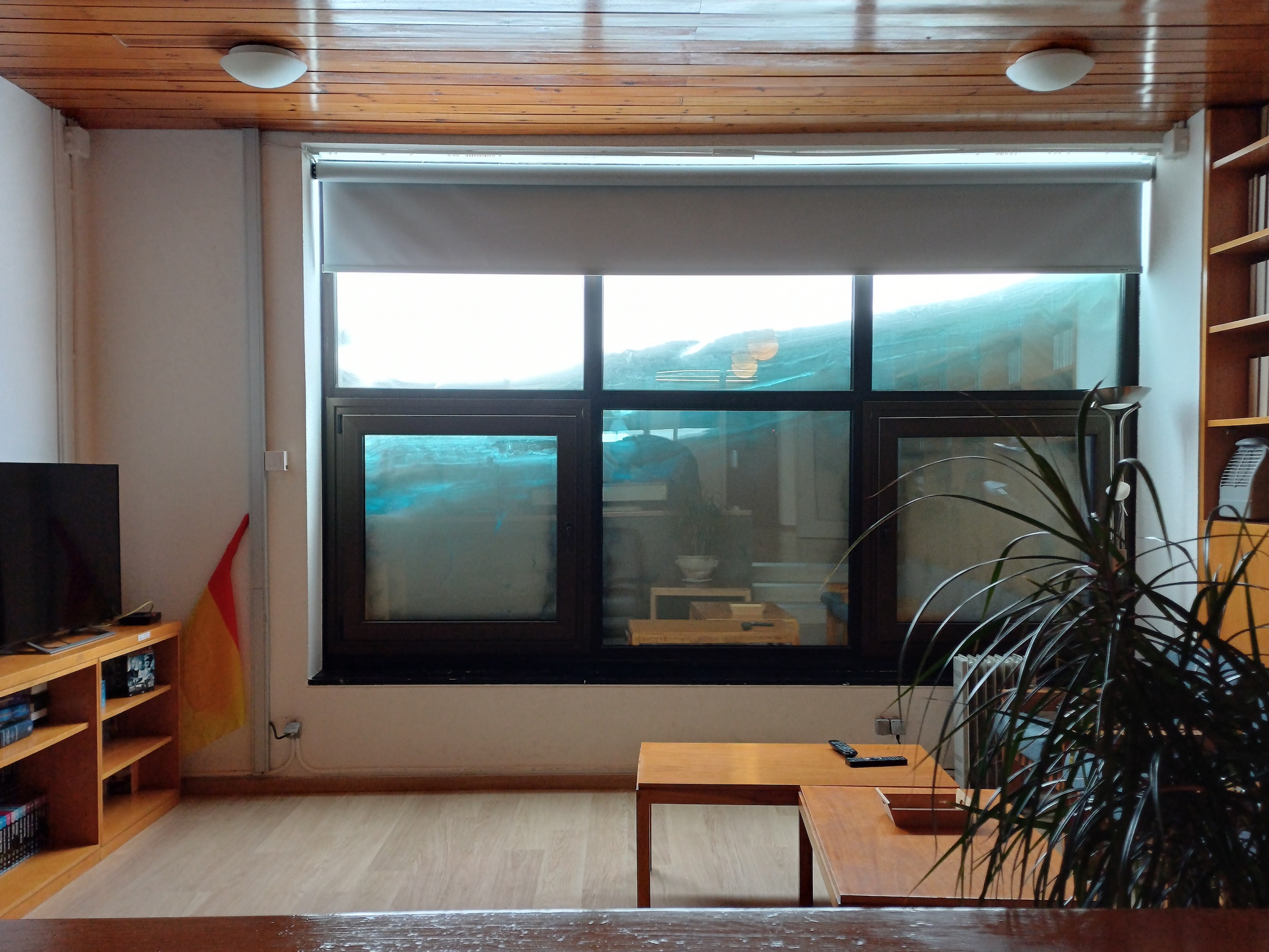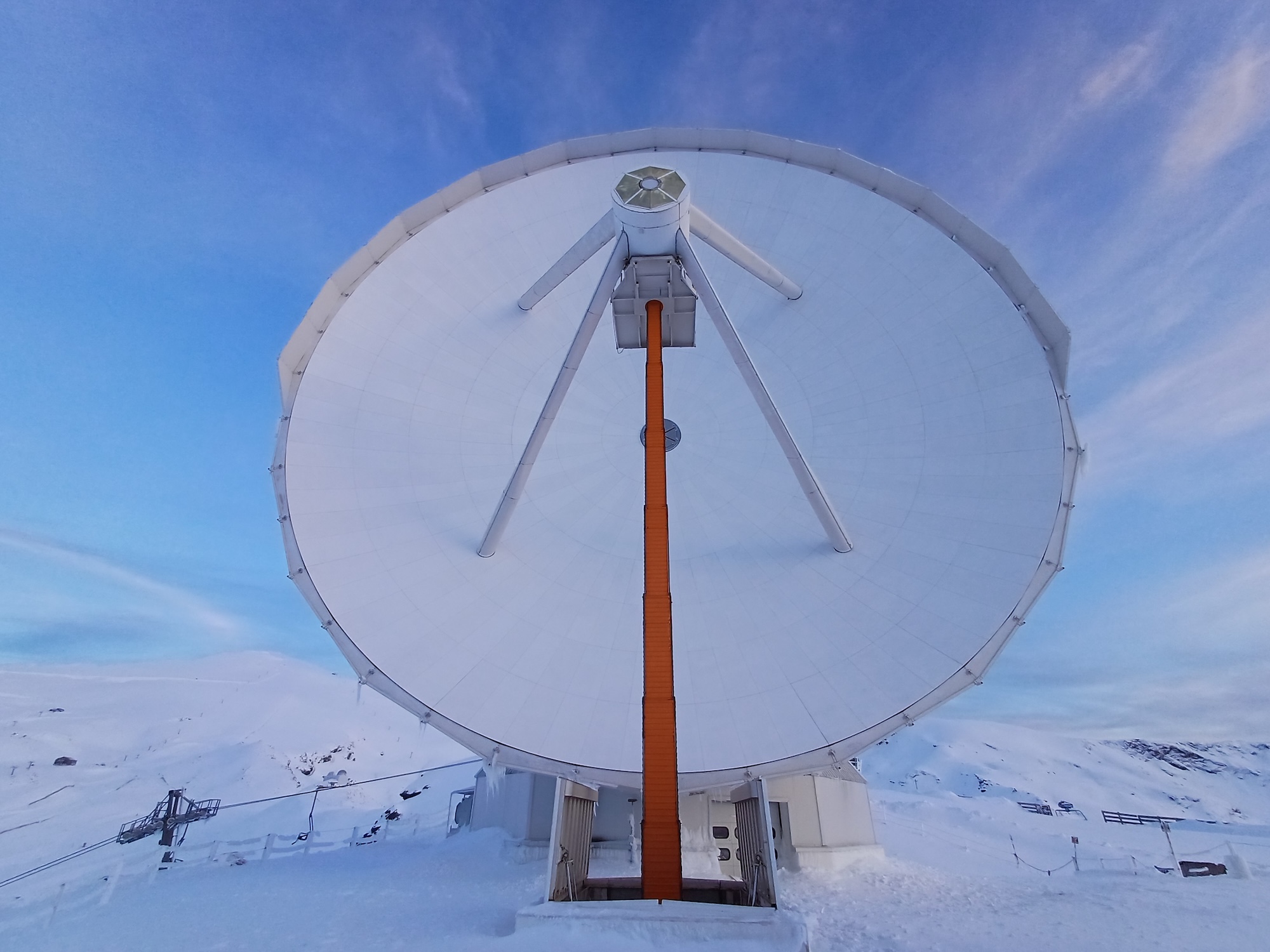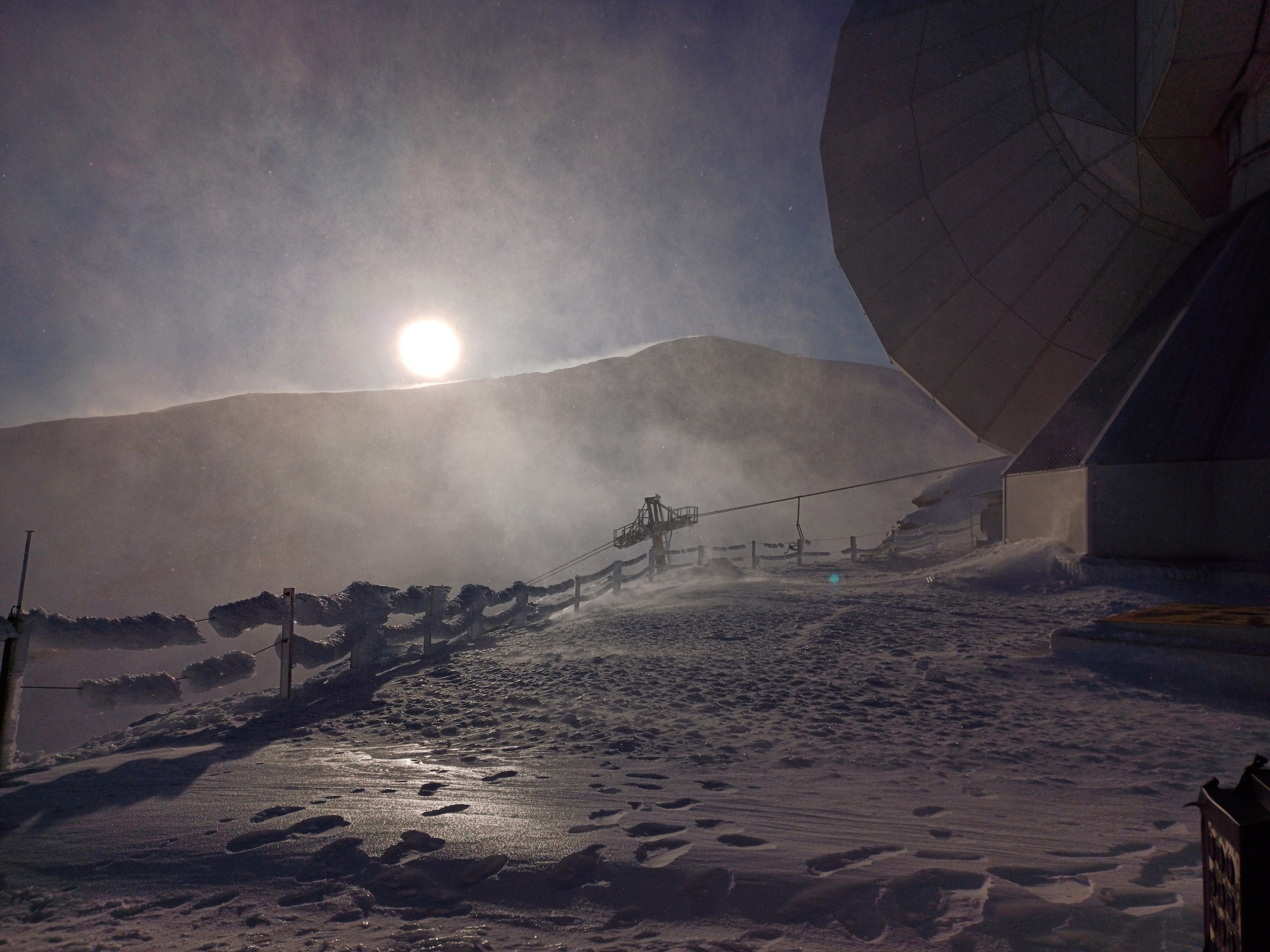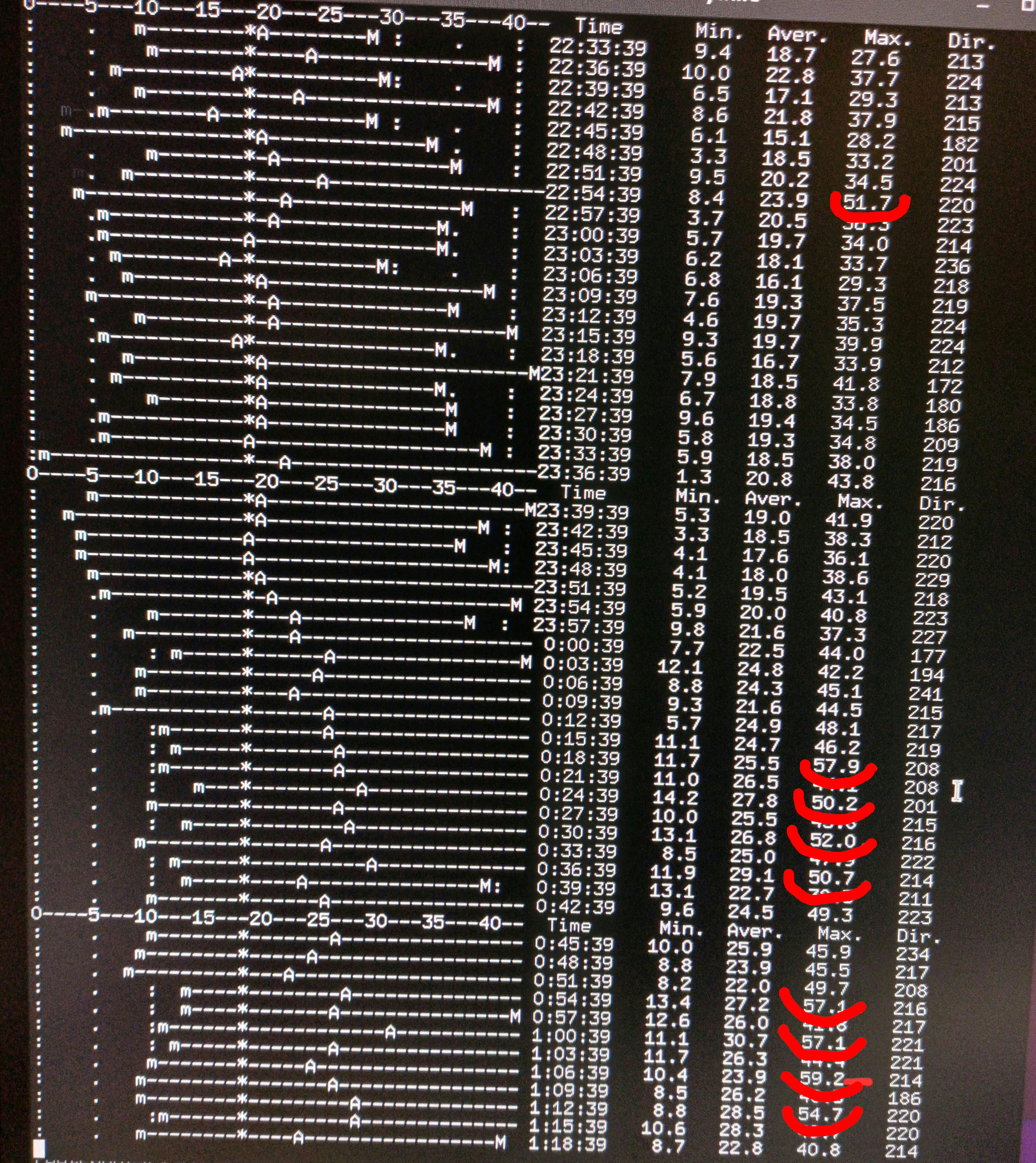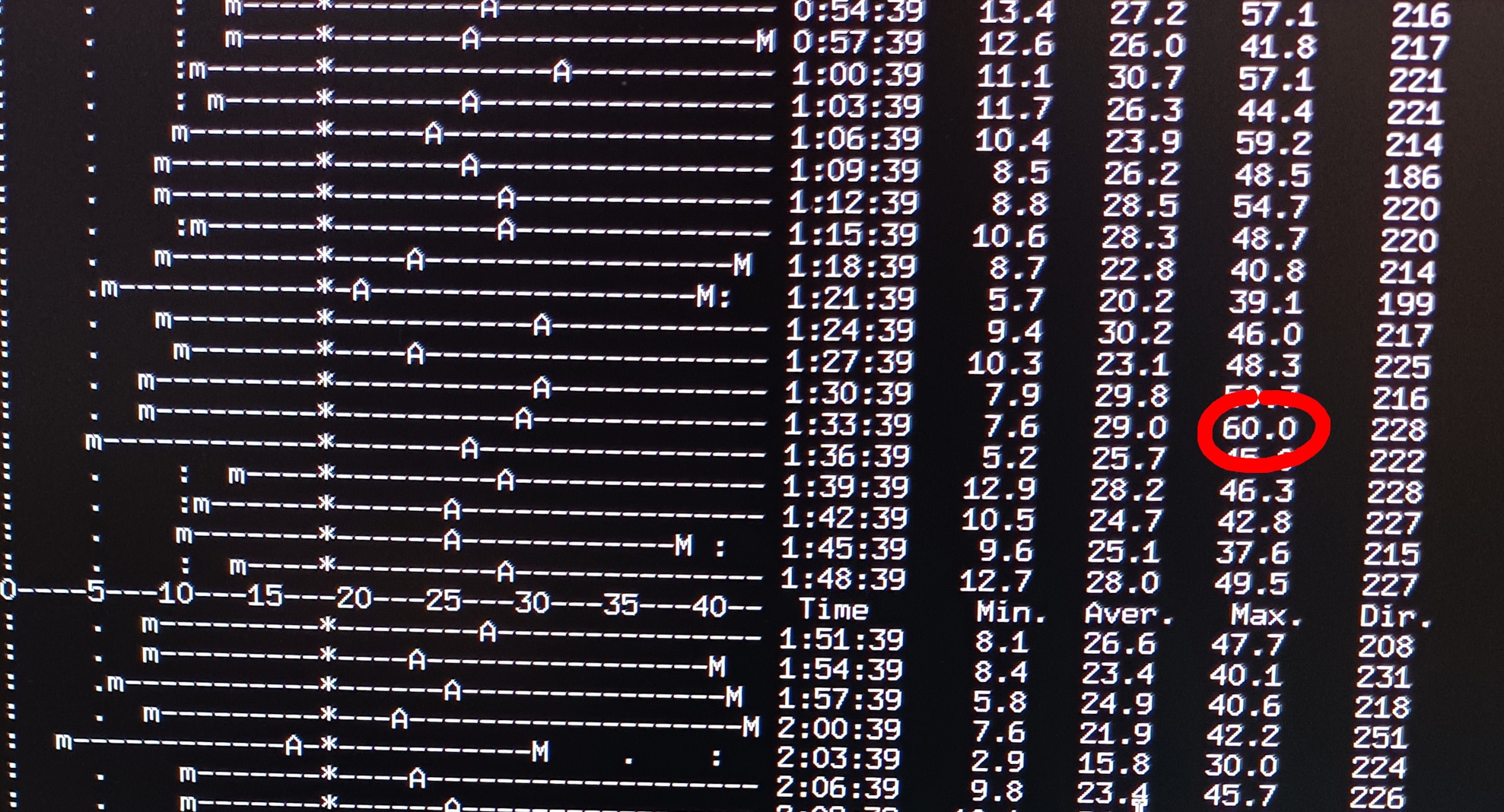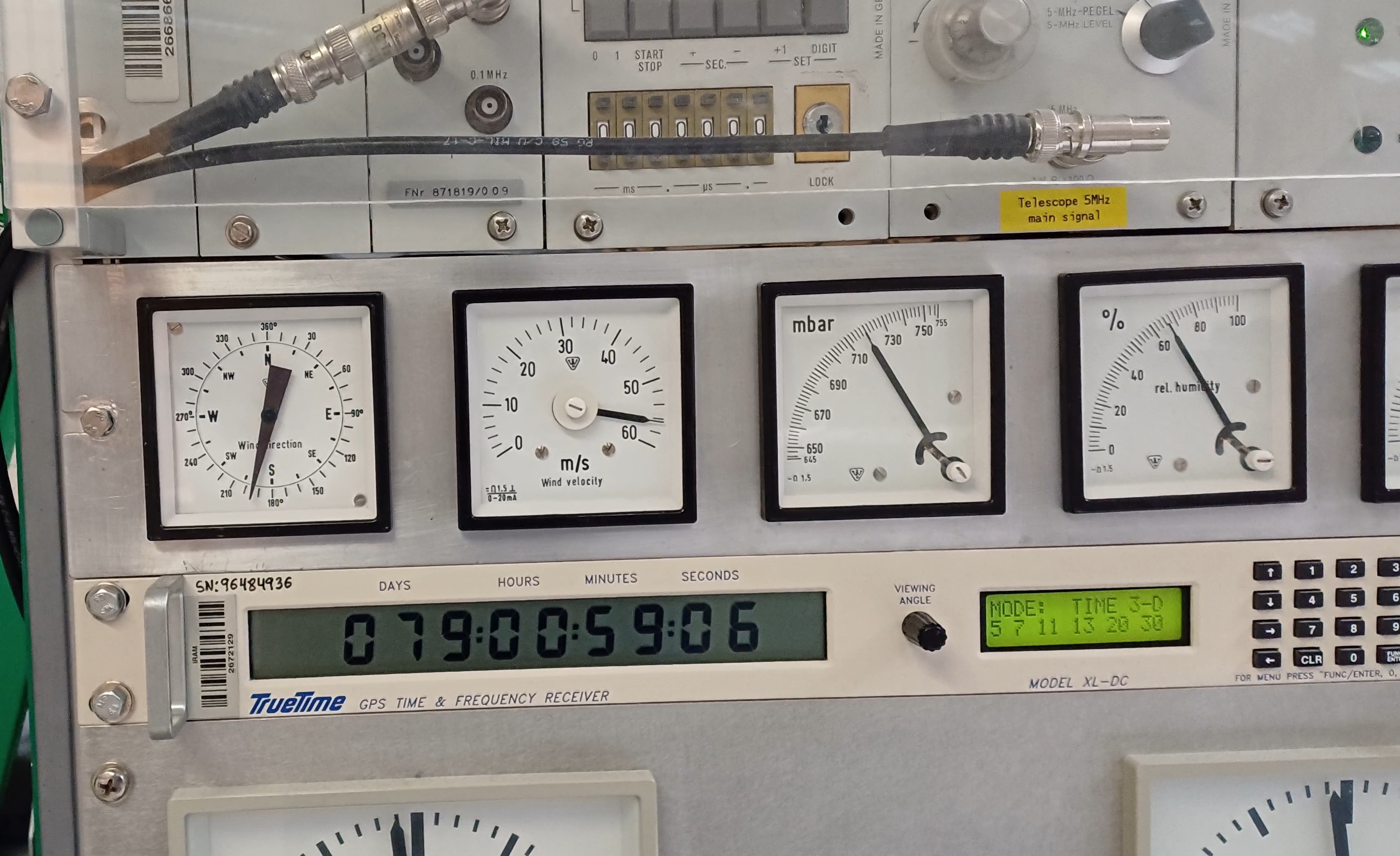|
Size: 14783
Comment:
|
Size: 14823
Comment:
|
| Deletions are marked like this. | Additions are marked like this. |
| Line 168: | Line 168: |
We did not find the convergent lens. |
NIKA2 Re-Commissioning
March 18th-25th, 2025 + ...
NIKA2 run 72
Cryo run 84
Tuesday, March 18th, 2025
@10:30 a.m. Angel, Carsten, Monica, Stefano and maaany others arrived at the Telescope. There is a lot of snow 2-3m or more, accumulated by the wind in some spots), the windows of the dining room are completely covered. The sky is cloudy, but it seems that it might clear up a bit later. No precipitation at the moment
In the morning we check the NIKA2 traces:
- Ar1 looks fine.
- Ar3 has a big noise bump at ~0.3 Hz, common to all KIDs
- Ar2 has noisy KIDS in Box C. There is also a noise peak at ~10 Hz for a number of KIDs and a new spike at 6 Hz for KID KA156.
We have a briefing to make the point of what needs to be done first.
- the make-imbf is ready to be started and used. Both new and old versions are set to the current commissioning run
- New sweep: done on Wed 12/3. Ar1 OK. Ar3 noise bump. A second sweep was done on Fri 14/3, adjusting the Ar3 one. It looks better. Ar2 has the original sweep, defined in October 2024.
- Radio alignment check. the weather is not good enough. Maybe on Thursday we will have a chance. At the beginning we will start the operations without checking the alignment. Meanwhile we'll ask Dave if he'd be available on Thursday.
- check DAQ on sky. This is the first operation we will do:
- Point a bright source (Mars, a QSO, or else, depending on the time of the day) and start an OTF
- Check traces to verify that we see the source
- check also the beam width on the traces
this will already tell us if a) we are on source; b) there are any problems with the dichroic and the beam
- small beam map: we will observe a small beam map (script already prepared by Nicolas and Angel), to be used by Nicolas to produce preliminary KIDPARS for the IDL pipeline
- with this, Nicolas will produce the first Kidpars.
- meanwhile we might observe already a first standard beam map for preliminary PIIC DAFs
- once the preliminary KIDPARS are ready, we proceed with pointing, focus, standard beam map, to be used to produce KIDPARS and DAFs for the whole array(s)
- with the big (standard) beam maps, Stefano will produce preliminary DAFs and Nicolas the KIDPARS
- once they're ready, we can start the PIIC Ql and we can give some peaceful time to Nicolas
- the standard beam map will give us already the followingnpieces of information:
- DAFs/KIDPARS
- flat field (i.e. is the dichroic healthy?)
- focus difference between the three arrays
- we'll then loop on pointing, focus, primary calibrators and calib_1scan, with the aim to collect enough statistics for:
- determine the new absolute flux calibration factors
- study the difference of focus between the three arrays
- derive new P2 and P7 values for the pointing model (Manuel might help with this)
We decide also that if we have dead times, there's no problem: we will avoid to put ourselves under pressure/stress and we will take the needed time to tackle possible problems/mistakes, discuss ideas and analyze the situation.
@13:15 LT: De-icing is switched on full power, but it's not fully working, there's some ice on the dish.
@15:25 LT: the Ar3 bump moved from 0.3 Hz to 0.6 Hz
@17:20 LT: it's still slightly snowing. Sometimes we see blu patches of sky. We check the main dish: it's mostly clean, except the upper-right rim and one of the four sub-reflectors supports. We park the antenna facing the "faint" sun, hoping it helps.
@19:00-19:30 LT: Frederic went up on the platform, but the ice on the legs of the subreflector is too hard and too far away to be reached and removed. Therefore we need to wait for the Sun to melt it tomorrow morning. Meanwhile the sky cleared up. Current air temperature: -4 C. Later the sky got foggy again.
Wednesday, March 19th, 2025
@07:00 LT: We wake up with a wonderful clear sky... and wind at 20-25 m/s. The current air temperture is -6 C. The telescope is facing the rising sun, in the hope that the ice melts, but the wind forecast predicts even stronger winds later today.
@10:00 LT: The wind has surpassed 32 m/s some time ago and some clouds are coming.
@12:30 LT: we have our first daily meeting.
- The weather is not collaborating, but we might have a chance tomorrow in the late morning and/or afternoon. Stay tuned!
- We developed a bad weather plan, in case we cannot go on the sky:
- PIMP: craning it up, installing it, running it. Samuel will send info on how to install it with photos. Dave will come to the telescope on Thursday and Friday to help with all steps.
- checks of the Ar3 synthetizer, Dave suggests to possibly replace it.
- Dave suggests tests of the radio alignment, even against a closed vertex.
- Since the Ar3 noise bump at 0.3-0.6 Hz is happening with the closed NIKA2 window, we think that it must be something vibrating inside the instrument or something about the Ar3 synthetiser, which may be much more sensitive than the previous Ar3. It could be the wind, though the previous Ar3 did not show this. In any case, this low frequency correlated noise should not affect observations.
Samuel points out that the constraints he set earlier for the check of the radio alignment (tau<0.2 and stability +/ 2 Jy/beam) can be relaxed. A tau up to 0.4 is fine, as long as we have stability.
- Samuel also suggests that - if we need to focus before the preliminary KIDPARS are ready - we could try to do it checking the traces and maximizing the signal of the source in there.
- priorities for tomorrow:
- if the weather permits, the 1st priority is go on sky
- if not, then we'll proceed with Dave's bad weather plan (see above)
- next meeting: tomorrow at 12:30 LT, using the IRAM-Granada video-cons system (check your email inbox)
Thursday, March 20th, 2025
During the night, we enjoy the wind show...
@08:00 LT: Current conditions: Temperature 0 C; wind speed ~20-30 m/s; sky partially cloudy. We now wait patiently for the wind to slow down further and give us a chance to start the NIKA2 operations.
@12:00 LT: Wind stays at 30-35 m/s. Transport cancelled. Based on input from SL, dedicated PIMP page created.
@12:30 LT: we have our daily meeting.
- observations cannot be started
the transport up here has been cancelled because the wind is >35 m/s
- tomorrow Dave will likely come up
- the plan is to use the PIMP tomorrow
- Samuel prepared a very good collection of all available pieces of information about how to install and operate the PIMP (thank you! See above). We'll try our best, but we won't get crazy to figure it out, in case we can't make it work in few hours.
- Angel will write to Martino, Alessandro, Juan et al. with some questions about PIMP details and with the current PIMP .ini file for verification.
- a big wind and snow storm are expected for tonight.
- therefore we cancel the next daily meetings. If we need help for the PIMP, we will actively contact you again.
Friday, March 21st, 2025
@09:00 LT: stopped. Wind meter frozen, but wind is probably still around 20 m/s. There is a lot of ice at the subreflector and in the lower part of the dish. Outside temperature -6deg. De-icing at full power. Low lying clouds above the telescope. AB tested the new ini file for acquisition with pimp.
@10:00 LT: Dave arriving. NIKA2 cooling ok, though 1 fan is stopped due to a block of ice.
@12:30 LT: PIMP work started:
- PIMP craned up.
AB & DJ mounted it.
@13:00 LT SB and CK join the PIMP work and we all test it together:
- scanning is ok;
- the DAQ needs to be switched on, in order for the connection to work (obviously);
- the connection to the acquisition is OK;
- the values of the parameters have been set to the values used in 2019: Cold black body at 30°, hot black body at 110°, PIMP control at 19200 bauds, Fmax at 892 GHz, resolution at 5 GHz.
- we notice that the data sampling frequency in the Raspberry is by default ~47 Hz, but we set the .ini file at ~23 Hz. Therefore, later we will double check what was in the 2019 .ini file and we will change to 47 Hz if needed.
- we have not yet positioned the PIMP in front of the NIKA2 window, but we start a couple of "fake" scans as a test. We would like to see where/if the scans are written. We think that - since the DAQ is on and the Raspberry/PIMP is connected to the NIKA2 net, this would produce some scan files. Instead, we do not find any new scan files written on disk.
- we will continue after lunch
@14:30 LT: DJ & AB are working on exchanging the Ar3 synthesizer, but they interrupt because it requires more operations than expected.
@14:40 LT: we continue the PIMP work. Here follow a list of the important things we do and learn. This can be used as a "practica' guide" to use the PIMP in the future, and a condensed shortlist has been copied to the dedicated PIMP IRAM-ES wiki page:
the PIMP has already been mounted and tested before lunch (see above). We followed the instructions given by Samuel. These instructions can be found here.
- we manage to install the PIMP in front of the NIKA2 window. Unfortunately it touches on one side the support of one of the mirrors and on the other side the cryostat, when changing the PIMP orientation angle. It did not touch in 2019, but now it does. Dave slightly smooths the PIMP corner at the side of the wall/mirror, and it goes through.
- we switch on the electronics "grey box" and the Raspberry
- the temperature of the cold and hot loads must be set on the grey box. This is done by selecting the cold or hot load (with the dedicated analog switch), and increasing their voltage. The current temperature is displayed on the grey box. We start at ~19 C for both. It takes roughly 15 minutes to reach 30 C for the cold load and at least 1 hour to reach 110 C for the hot load. These values are those used in 2019. NOTE that it's not sufficient to set the numbers in the Raspberry (as we thought this morning), but it's necessary to set the heaters properly on the grey box.
- set up the parameters of the Raspberry (see what we did before lunch). Now it's important to point out that the temperatures come from the grey box and need to be set (copied) by hand in (to) the Raspberry
- also the current tilt angle needs to be set by hand (bottom yellow "tilt angle" button): it represents the physical orientation angle of the PIMP.
- note that the max Frequency we choose was 892 GHz, but it might have a limit lower than that. For example, it seems to be 889 or 891 GHz, depending on some other setup.
- the PIMP communicates properly with the DAQ: we start a scan by clicking on the Raspberry "Scan" big button. We examine the traces on the DAQ (pimp_pos on the x axis, RFdIdQ on the y axis) and we clearly see the PIMP signal
nevertheless, the scan files are not written automatically. Martino explained us how to manually start the recording of a scan on file (thank you!): click on the big black rectangle in the lower part of the small "file" window (usually on the same window where DAQ is launched); this creates a new file, of "manual" kind; the file name appears in that same box, and the box is now colored pink; stop the recording by clicking again on the same rectangle.
@16:00-17:00 LT we are almost ready to start the PIMP integrations. Only the hot load temperature needs to reach 110 C. Meanwhile we take some test scans, to verify that the files are now correctly written, using the manual procedure. And here start some problems:
- we suddenly lose the tuning of Ar1 and Ar3, during the first integration
- we re-tune and recover tAr1 and Ar3, but Ar3 has now 60 lost KIDs. Uhm, this seems a large number. It was much smaller before.
- we re-tune and Ar3 is gradually losing increasingly more KIDs. we re-tune again and again, trying to recover Ar3, but...the number of KIDs lost increases: first 60, then 180, then 640, and finally 848 after half an hour or more trying.
- we try to switch the light off, in the hope that they had some influence, but there's no improvement
- we decide to go only with Ar2 and Ar1 and proceed with the PIMP measurements anyway
@17:20 LT it's time to go on
- also Ar1 and Ar2 are losing KIDs, evidently it's the effect of the high PIMP temperature. It's time to integrate
- after reaching the nominal temperature, the voltage of the heaters needs to be decreases, so to keep the temperature stable, namely:
- full power when heating
- ~2.5 Volts for the cold load will keep it at roughly stable T~31C
- ~29 V for the hot load at T~108C
- at each change of angle the tuning of Ar1 and Ar3 is lost (polarized arrays) and we re-tune
- we have to limit to an angle of +15 deg max, because beyond this, the PIMP box touches the cryostat
Summary of scan file names (in the run84_X/X36_2025_03_21/ directory):
Scan nr
Filename
Tilt angle
Optics
Notes
10
16:23:47
0
Divergent
11
16:26:16
0
idem
12
16:31:28
-90
idem
re-tuned
13
16:34:23
-90
idem
14
16:41:03
-45
idem
re-tuned
15
16:42:50
-45
idem
16
16:48:57
+15
idem
retuned, angle at the limit of touching the cryostat
17
16:50:44
+15
idem
@17:55 LT: the NIKA2 window cover is back in place. We give it some time and then we'll check the tuning again, to see if the KIDs will be back. And @18:10 they're all back, all three Arrays, with lost KIDS: 11/13/11 (Ar1,2,3). It seems that the PIMP (hot) load was too hot (we used ~110 C as recommended).
We did not find the convergent lens.

